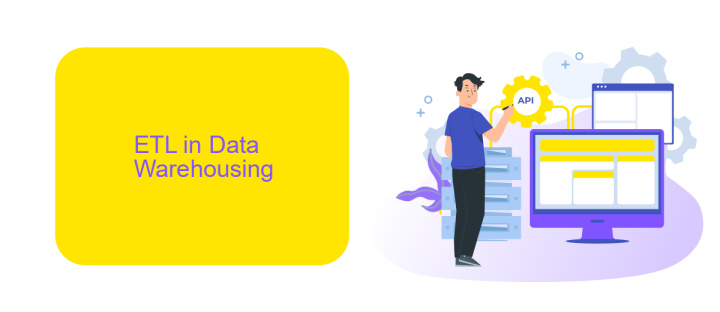What Does ETL Stand for in Data Warehousing
ETL, which stands for Extract, Transform, Load, is a fundamental process in data warehousing. It involves extracting data from various sources, transforming it into a suitable format, and loading it into a data warehouse for analysis and reporting. This article explores the significance of ETL in data warehousing, its key components, and how it enables efficient data management and decision-making.
What is ETL?
ETL stands for Extract, Transform, Load. It is a crucial process in data warehousing that involves extracting data from various sources, transforming it into a suitable format, and loading it into a data warehouse. This process ensures that data is consolidated, clean, and ready for analysis.
- Extract: Data is collected from diverse sources like databases, APIs, and files.
- Transform: The extracted data is cleaned, formatted, and transformed to meet the requirements of the target data warehouse.
- Load: The transformed data is then loaded into the data warehouse for storage and analysis.
ETL is essential for integrating data from multiple sources to provide a unified view. Tools like ApiX-Drive can simplify the ETL process by automating data extraction and transformation, allowing businesses to focus on data analysis rather than data preparation. By using such services, organizations can streamline their data workflows and enhance their decision-making capabilities.
ETL in Data Warehousing

ETL (Extract, Transform, Load) is a critical process in data warehousing, enabling the integration and consolidation of data from various sources into a centralized repository. During the extraction phase, data is gathered from disparate systems, including databases, flat files, and APIs. This raw data is then transformed to ensure consistency, accuracy, and compatibility with the target data warehouse schema. Finally, the transformed data is loaded into the data warehouse, where it becomes accessible for analysis and reporting.
Modern ETL processes often leverage automation tools and services to streamline data integration. ApiX-Drive, for instance, offers a robust platform for automating data workflows, reducing the manual effort involved in setting up and maintaining ETL pipelines. By using such services, organizations can ensure timely and reliable data updates, enabling more efficient and accurate business intelligence operations. The automation capabilities of ApiX-Drive also help in managing complex data transformations and integrations, making it easier to adapt to changing business needs.
The ETL Process

The ETL process, which stands for Extract, Transform, Load, is a critical component in data warehousing. It involves extracting data from various sources, transforming it into a suitable format, and then loading it into a destination database or data warehouse. This process enables organizations to consolidate data from disparate sources, ensuring consistency and reliability in reporting and analytics.
- Extract: Data is collected from multiple sources, such as databases, APIs, and flat files. This step often involves data integration tools like ApiX-Drive, which can automate the extraction process and handle various data formats.
- Transform: The extracted data is then cleaned, enriched, and transformed into a unified format. This step may include data validation, deduplication, and aggregation to ensure data quality and consistency.
- Load: Finally, the transformed data is loaded into the target data warehouse or database. This step ensures that the data is available for querying, reporting, and analysis.
By automating the ETL process with tools like ApiX-Drive, organizations can streamline data integration, reduce manual effort, and improve data accuracy. This ultimately leads to more informed decision-making and a competitive advantage in the marketplace.
Benefits of ETL

ETL (Extract, Transform, Load) processes play a critical role in data warehousing by ensuring data is accurately and efficiently moved from source systems to a data warehouse. This process enhances data quality and consistency, which is vital for making informed business decisions.
One of the main benefits of ETL is its ability to transform data into a usable format. By cleaning, filtering, and organizing data during the transformation phase, businesses can ensure that their data warehouse contains high-quality, reliable data. This is crucial for accurate reporting and analysis.
- Improved data quality and consistency
- Streamlined data integration from multiple sources
- Enhanced data accessibility and usability
- Time and cost efficiency in data processing
Furthermore, services like ApiX-Drive can simplify the ETL process by providing automated integration solutions. This helps businesses to seamlessly connect various data sources and applications, ensuring a smooth and efficient ETL workflow. Ultimately, leveraging ETL processes and integration tools can lead to better decision-making and a competitive edge in the market.


Conclusion
In conclusion, ETL (Extract, Transform, Load) is a crucial process in data warehousing that enables organizations to consolidate data from various sources, transform it into a usable format, and load it into a centralized repository. This process ensures that data is clean, consistent, and ready for analysis, which is essential for making informed business decisions. By implementing effective ETL processes, companies can improve data quality, enhance operational efficiency, and gain valuable insights from their data.
Moreover, modern integration services like ApiX-Drive can significantly simplify the ETL process by automating data extraction, transformation, and loading tasks. ApiX-Drive offers a user-friendly platform that allows businesses to connect different applications and data sources seamlessly. This not only reduces the time and effort required for manual data handling but also minimizes the risk of errors, ensuring that the data is always accurate and up-to-date. By leveraging such tools, organizations can focus more on data analysis and strategic planning, ultimately driving better business outcomes.
FAQ
What does ETL stand for in data warehousing?
Why is ETL important in data warehousing?
What are the main components of an ETL process?
How can automation be applied to the ETL process?
What challenges can arise during the ETL process?
Routine tasks take a lot of time from employees? Do they burn out, do not have enough working day for the main duties and important things? Do you understand that the only way out of this situation in modern realities is automation? Try Apix-Drive for free and make sure that the online connector in 5 minutes of setting up integration will remove a significant part of the routine from your life and free up time for you and your employees.

